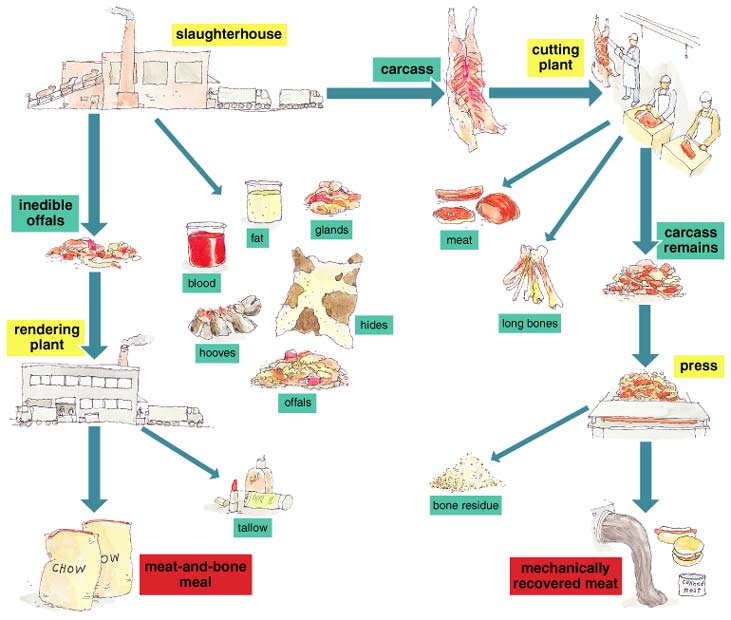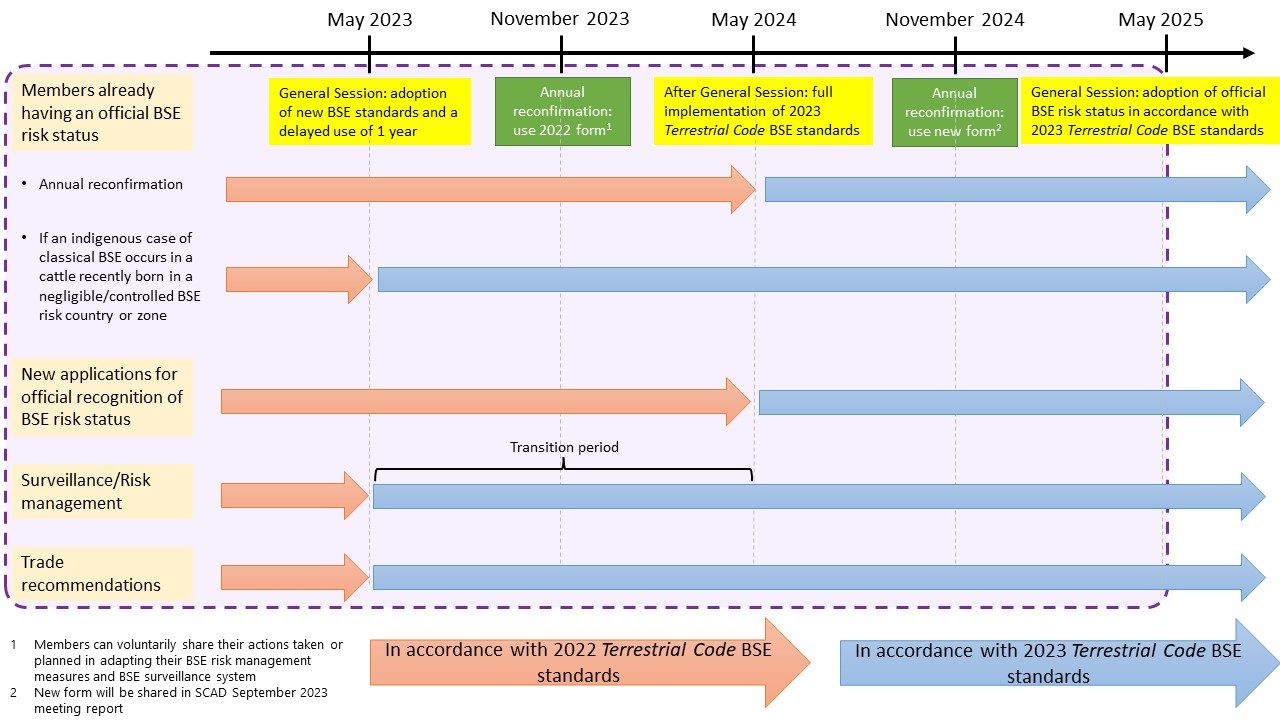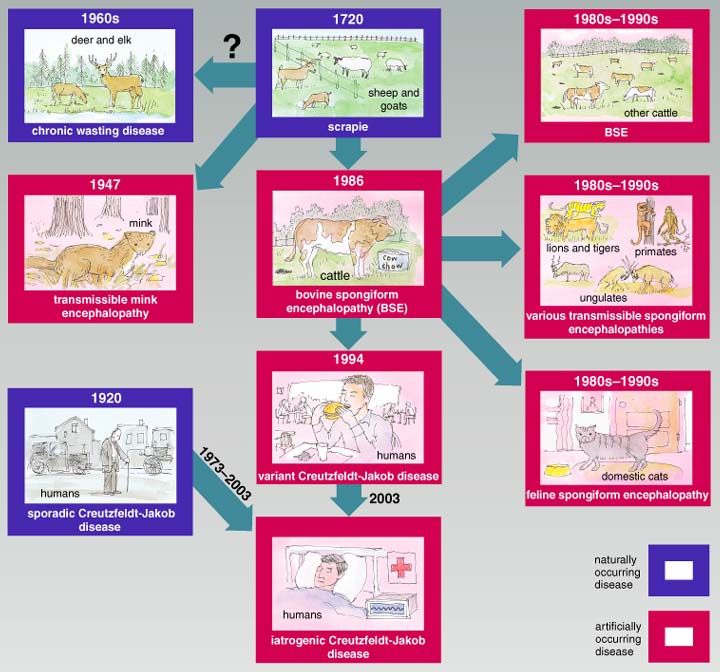Reference




OpenAI's Answer
Bovine Spongiform Encephalopathy (BSE), commonly known as mad cow disease, was first identified in 1986 in cattle in the United Kingdom. It is a progressive, degenerative, and fatal disease affecting the central nervous system of cattle. The primary theory about how BSE originated posits that cattle were infected through feed containing the remains of other cattle infected with a prion disease (possibly scrapie from sheep).
The link between BSE and human disease was established when the variant Creutzfeldt-Jakob disease (vCJD) was identified. This human condition emerged and was strongly associated with the consumption of beef products contaminated with the BSE prion. The prion, a misfolded protein, can induce similar misfolding in other proteins, leading to brain damage and death.
Here are some key resources and findings:
- Initial Identification: BSE was first identified in 1986 in the UK source.
- Link to Human Disease: The disease was linked to vCJD in humans, which was traced back to the consumption of BSE-contaminated beef. Source.
- Transmission Path: The prions causing BSE were primarily transmitted through feed that included infected nervous tissue source.
Here’s an overview image describing BSE contamination:

For further reading, you can explore these articles:
Follow Up
Related
What measures did the USDA take to minimize BSE exposure to humans in the USA?
What led to the dramatic decline in bovine spongiform encephalopathy (BSE) cases?
What factors contributed to the spread of bovine spongiform encephalopathy in cattle during the 1980
What safety measures prevent the spread of prion infections in ruminant feed?